

Shale, a mineral mulch, is very ornamental. It lasts a lifetime.
Key shale mulch facts
Availability – common
Cost – low
Ornamental value – brown or tan
Ornamental layer – 2 to 4 in (5-10 cm)
Renew rate – every 3-4 years
Soil enrichment – brings the soil to neutral
Shale is a type of gravel related to slate. It is a sure fit to any prized location in gardens and pathways. A few sacks of shale mulch will last a very long time, especially if you sift soil and dirt out from the mulch every few years.
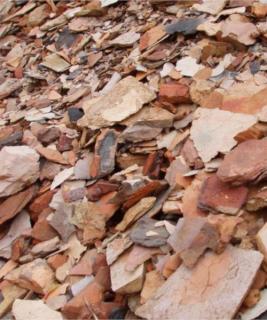
Thanks to all these advantages,
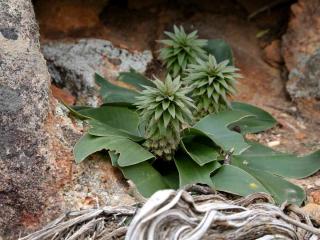 You’ll spur root development and growth of your plants.
You’ll spur root development and growth of your plants.Brownish or violet-gray and very stable as years go by, this mulch is particularly well suited to all kinds of beds: trees, shrubs, green plants and flowered plants, both outdoors and indoors.
Color depends on how much iron oxide the rock contains.
Shale heavily influences the pH of soil, bringing it closer to neutral (pH 7). If you have very acidic soil, using shale will bring the pH back to normal within a couple years in the immediate vicinity. Great to change the color of your hydrangea from blue (acidic) to pink (neutral)!
The main difference between shale mulch and slate mulch is that shale isn’t as shiny or reflective.
A layer about 3 inches thick (8 cm) is perfect. Any thinner and weeds will get through. Any thicker will make the soil heavier and more compact.
To avoid breathing in rock dust, wear a dust mask.
Although shale is rather blunt, you should wear gloves to avoid wounds. Working with gravel takes a toll on skin and gloves make spreading easier.
Pile small mounds of shale gravel every foot or foot-and-a-half (30 to 45 cm). Rake the mounds flat afterwards.
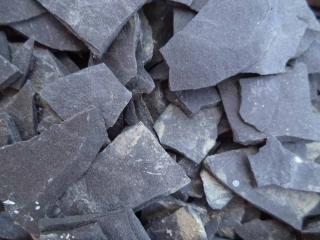
Soil and dirt will naturally rise up between shale gravel, in time. To bring the flower bed back to its initial appearance, two options are available:
A layer of new shale mulch doesn’t need to be as thick as the first layer.
You can recycle your previous stone mulch relatively easily.
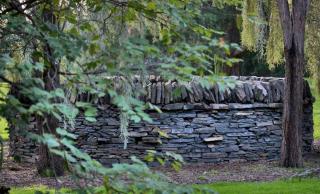 Dig the soil down to a depth of 4 to 6 inches (10 to 15 cm).
Dig the soil down to a depth of 4 to 6 inches (10 to 15 cm).Recovering old shale mulch is a great and cheap way to get your garden look astounding again. Your past investment will last forever!
Shale is a wonderful material to work with. From building a rock wall to creating a “dry river”, it’s a great mineral to decorate your garden.
The colors pair well with themed gardens, such as blue and white gardens. It also has a timeless look that sublimes arbors and wrought iron garden ornaments.
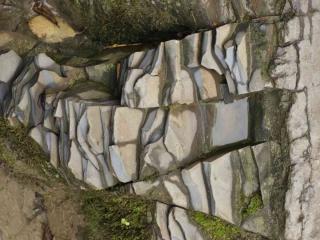
Shale is also known for another fact: it contains a small portion of organic compounds called kerogen. Energy companies try to extract this oil from shale in a process called fracking. It’s a disaster when done in pristine environments.
Shale occasionally has fossils in it – keep an eye out for those reminders of the past!
This mulch has many advantages, but it doesn’t help the soil get any richer.
As an underlayer, you can spread cocoa hulls, wood chips or, better yet, ramial wood chips and you’ll have the best of both worlds!
Read also: